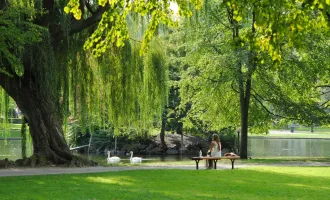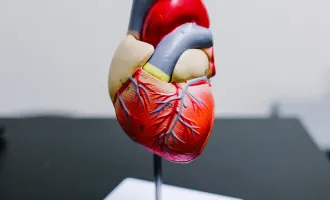In Long Range Development Plan, UCSF Sets Goal of Expanding Campus Housing; Will Take Years
Finding affordable housing is a struggle for many in the Bay Area, and UCSF students are no exception. Over the next few issues, Synapse will be exploring the present and future of student housing at UCSF.
UCSF has some work to do.
The school is accustomed to accomplishing its goals, but right now, by its own admission, it is falling well short when it comes to housing.
In its long-range development plan, approved late last year, the UCSF administration set goals of substantially increasing housing over the next 20 years.
Campus housing currently consists of 921 beds spread across 653 units, about two–thirds at Mission Bay and the remainder near Parnassus. As noted in the long-range development plan, “Occupancy is generally 100 percent, with a wait-list of over 700 individuals. There is a correlation between the steep increases in the number of people on the wait-list and rising rents in the city over the past few years.”
A similar proportion of postdocs and students—just shy of 20 percent of each—currently live in campus housing. It is with students and faculty, though, that UCSF wants to make the greatest improvements. Their goal is to provide housing to 40 percent of students, 25 percent of postdocs, 25 percent of clinical residents, and 10 percent of the faculty. Currently, only 1 percent of the faculty lives in campus housing.
To meet this goal by 2035, UCSF anticipates creating housing for an additional 1,600 people. The LDRP proposes construction of a 523-unit apartment complex at the north end of Mission Bay. At Parnassus, the largest proposed changes are the converting much of UC Hall and Millberry Union into student housing, creating a few hundred new units. The first step will likely be the conversion of the upper three floors of UC Hall, projected to begin within several years.
Such solutions will be of help to future, not current, students. However, it is expected that early in 2015, UCSF will identify some steps that it will take in the short-term to try to alleviate the unmet campus housing demand.
UCSF Housing History
UCSF housing has been expanding and contracting for years. From 1919 to 1972, there was a multistory residence hall at Third and Parnassus avenues (where the Marilyn Reed Lucia Child Care Center now stands); it fell victim to increased building standards and was torn down. When Millberry Union was opened in 1958, it included student housing, which was gradually phased out beginning in the late 1980s. During the 1990s, UCSF owned an apartment building north of Golden Gate Park, at Turk and Willard streets. In the past decade, UCSF housing has more than doubled, thanks largely to construction of the large apartment complex at Mission Bay.
In 1976, in response to neighborhood criticism of an ever-growing campus, UCSF agreed in a long-range development plan not to lease or acquire any additional properties in a space extending approximately six blocks in all directions from the boundaries of the Parnassus Heights campus; this restriction still stands and was a major contributor to the decision to build the Mission Bay campus.
In the course of acquiring and developing the Mission Bay campus, UCSF has entered into a several agreements covering topics such as building height limitations and contributions to public infrastructure. For example, they committed to contributing to the development of a fire station at Third and Mission Rock streets, and will donate a specified portion of northwest corner of the campus to the San Francisco Unified School District should it request it by 2027.
UCSF Housing Context
In comparison with two other urban health sciences campuses, UCSF is taking a middle course—unsurprising given that nearby housing costs are in the middle as well.
Currently, Rockefeller University and Weill Cornell Medical College, located adjacent to each other in the Upper East Side of Manhattan, guarantee housing to all students. For first-year students, this is generally dormitory-style housing. For older students, there are studios, one-bedroom and two-bedroom apartments available.
In contrast, there is no campus housing at the Chicago campus of Northwestern University, the site of its medical school. There is a limited amount of housing for graduate students available at its main campus, based in Evanston, Illinois.
The full LRDP, which covers much more just campus housing, and highlights can be viewed at ucsf.edu/about/cgr/current-projects/lrdp.
Synapse wants to get a better understanding of students’ housing experiences on and off campus. Look for our brief survey that will arrive in your inboxes soon.


